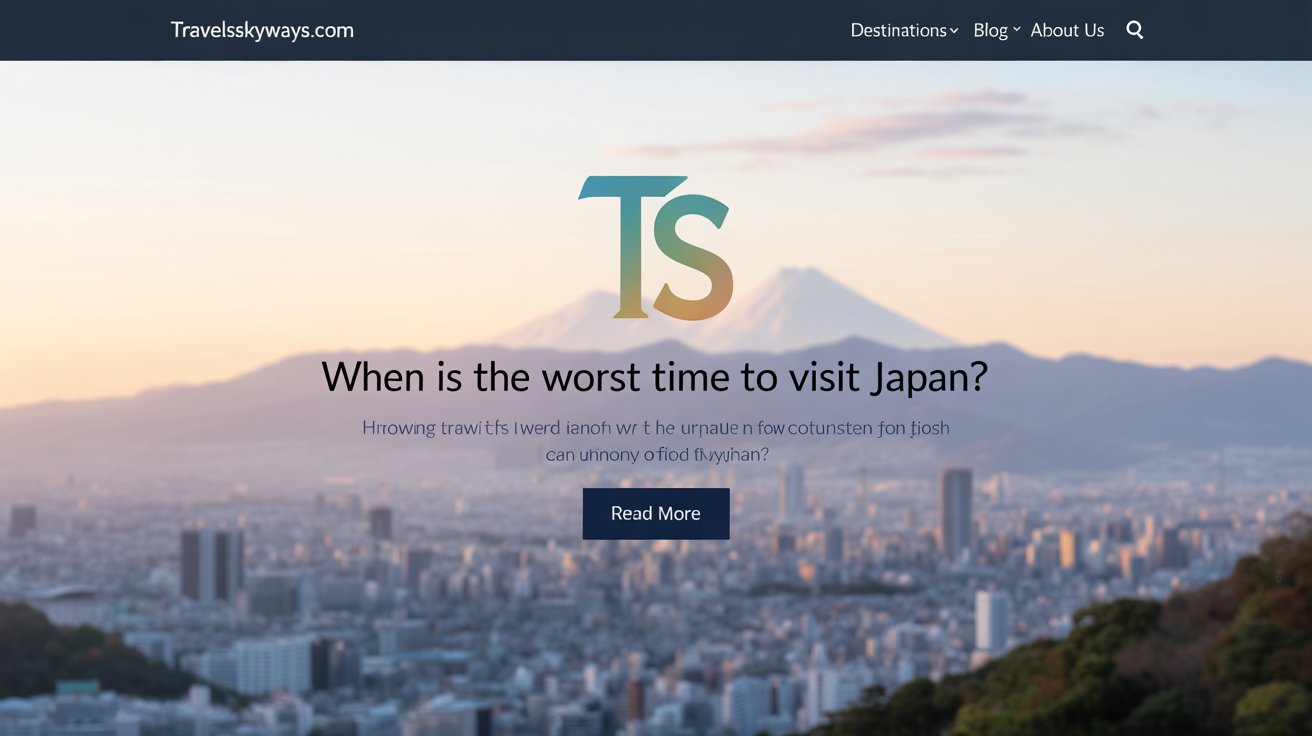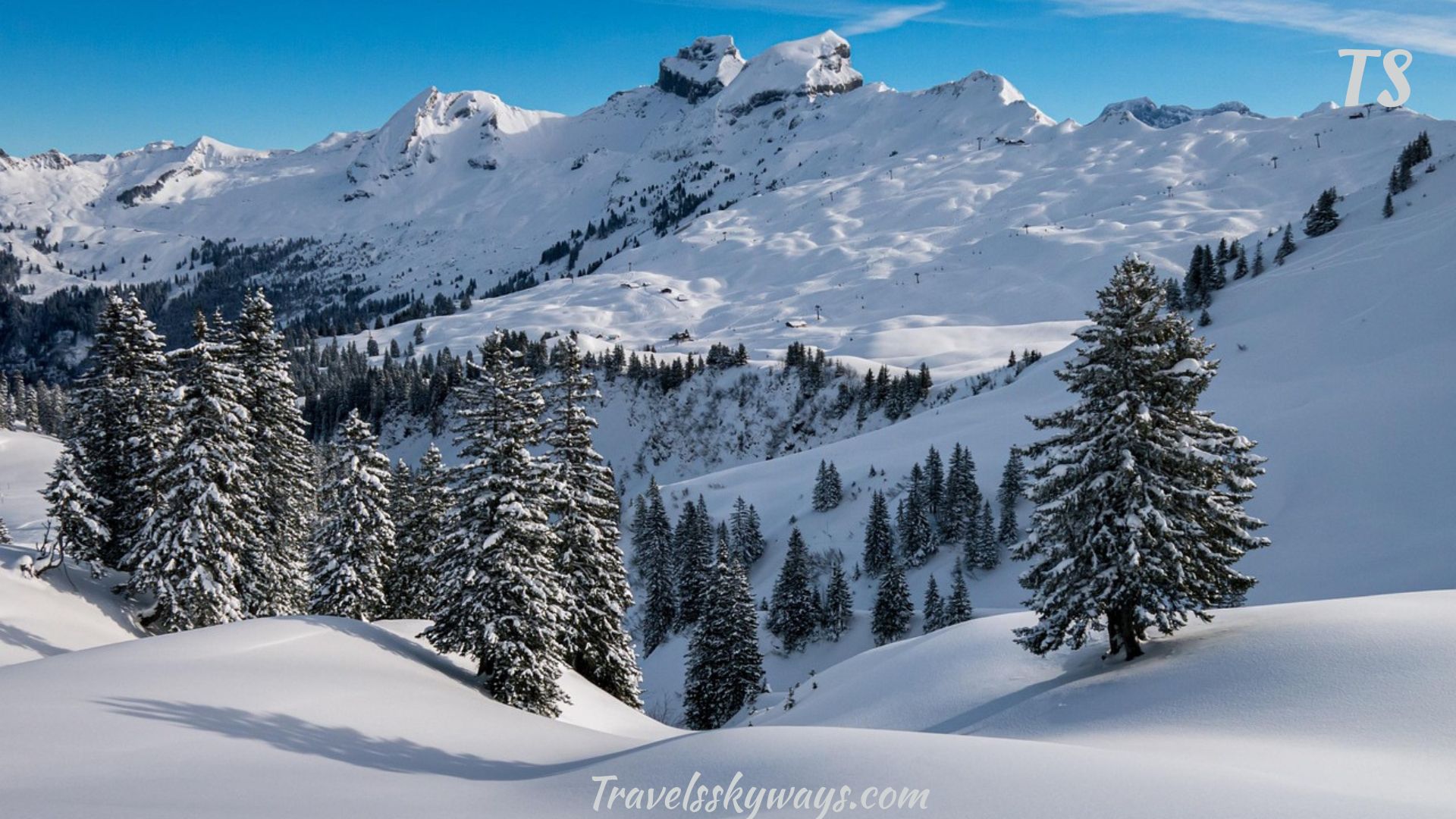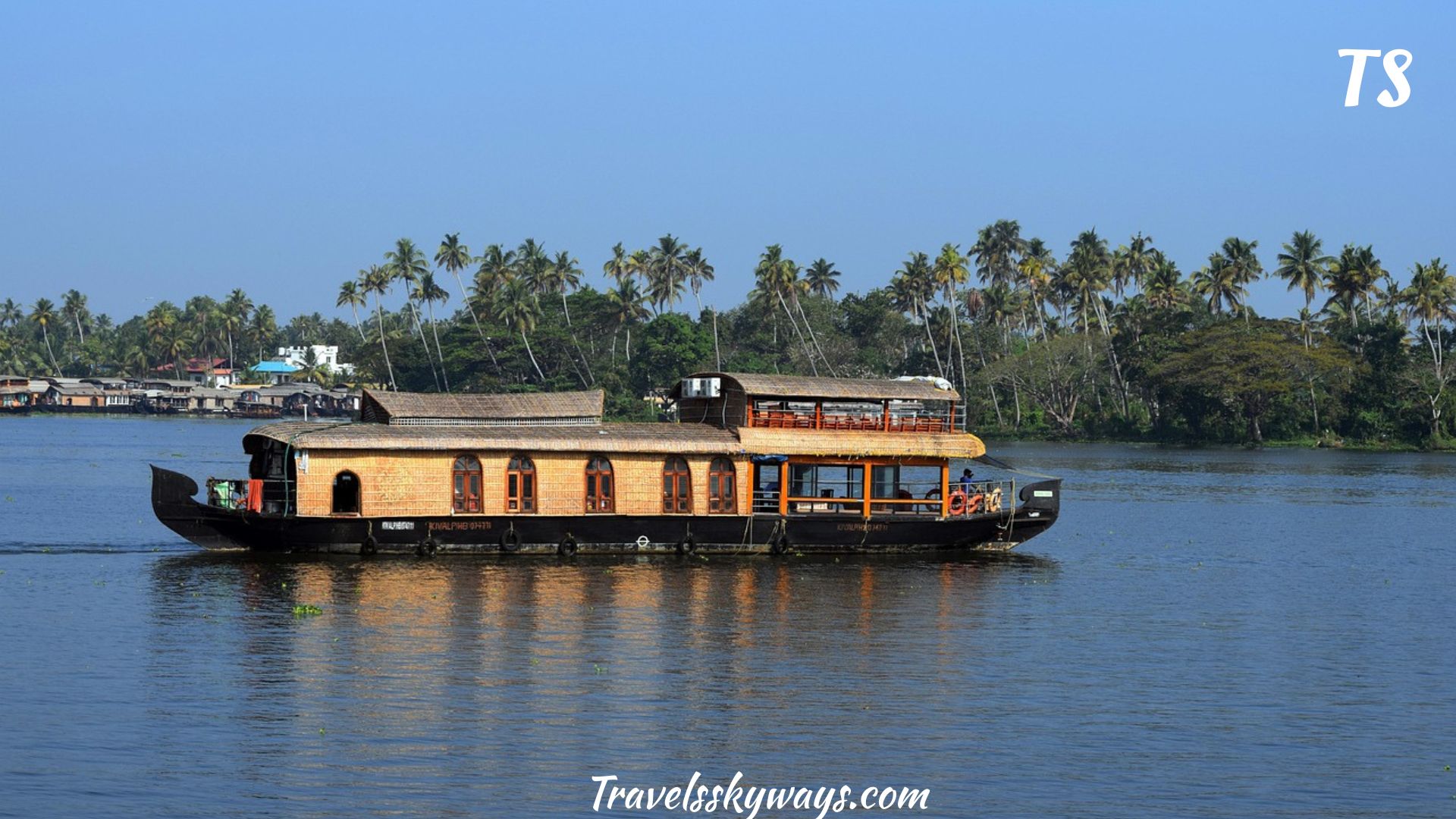
Are you wondering what the poorest time to take a trip to Japan is? You might want to be prepared for extreme weather conditions, crowds due to holidays, and the possibility of prices being at their peak; because this may really complicate your trip. Understanding the seasons you want to possibly avoid can assist with determining when visits in Japan are best.
Rainy Season in Japan (Tsuyu)
The rainy season (Tsuyu) usually lasts for the duration of early June to mid July. Over this time Japan will experience more rainfall and humidity. The rainy season does not mean it will rain continuously for this period of time but it can lead to your travel plans being a little more disorganized as well as making outdoor plans more unreliable.
Summer Heat & Humidity in Japan
Japan swelters in the summer months, particularly in July and August, in which cities such as Osaka and Tokyo can regularly break 30°C (86°F) with high humidity to boot – not so great for outdoor exploration Not only is the heat uncomfortable, it is also unlikely it will rain while it is also humid; and likely not at the optimum or most favorable times.
The Holiday Factor: When Japan is Busy
Japan’s national holidays can really affect travel experiences. Any trip to Japan should factor in peak seasons associated with festivities, which would include Golden Week (late April to early May), the mid-August Obon Festival, and just before and after the New Year. Accommodation and transportation are available and priced; besides, that period also influences the crowded conditions on popular travel spots of domestic and international tourists alike.
Best Month to Visit Japan: Alternatives
The way around peak season difficulties is to travel during “shoulder season”. Autumn, at the end of October-November, is the best time for nice weather and few crowds. It’s also a great time to see one of the best parts of visiting Japan – the beautiful Autumn leaves.
Weather patterns by region in Japan
With the various types of landscapes all over Japan, they all experience varying weather conditions accordingly. Hokkaido nevertheless would be known for quite low temperatures in July and August with less humidity, thus declaring itself as an excellent summer getaway.
The entire country of okinawa is also in its rainy season during July-August, but rain can also occur earlier in May-and June; plus, in July-October okinawa is also in a vulnerable time for typhoons.
Plan accordingly around the challenges – and embrace the seasons
Depending on your wishes for sights and experiences, understanding seasons in Japan can help you shape travel plans. Each season in Japan has its own specialized things to experience. Some seasons’ unique features you may want to experience, such as cherry blossoms in the spring, summer festivals or winter scenic snow.~
The Climate Introduction
Japan is one of the countries with diversified climates from tropical in the south to temperate in the north. This means, while you may be in the monsoon in one part of Japan, there could be bright blue skies somewhere else. Thus, you will need to study the climate expectancy for each region to have favorable weather during your stay in Japan.
Japanese Seasonal Changes
Each season has its own wonderful experience that is season-specific. Spring is pleasant and it brings the cherry blossoms; summer is for festivals and fireworks; autumn decked with breathtaking colors of change; and winter with snow and hot springs.
Must Read: Japan Itinerary 7 Days
Variation in Regional Climate
- Cool summer and snowy winters in Hokkaido
- Honshu features a range of temperatures with cold winters and scorching summers.
- Mild temperatures year-round abound in Kyushu together with great humidity.
- Okinawa has a typhoon season and a rainy season in a tropical climate.
High Dates Not to Travel
If you are looking to avoid the crowds and prices, these are the times to avoid
- Cherry Blossom Season (late March to early April): Pretty, but peak tourist time.
- Golden Week: Several national holidays, hence widespread domestic travel.
- New Year Holidays: Closure of many businesses and crowded transport.
Extreme weather scenarios
At some times, the weather in Japan might be severe
- Typhoon Season, July to October, causes intense rains and strong winds mostly in southern areas.
- Northern areas get significant snowfall, which can upset travel plans.
National and cultural festivities
Knowing Japan’s cultural holidays can help you save travel interruptions
- Many Japanese come home for the Obon Festival, hence travel is congested.
- Summer holiday (late July to end of August) causes more home travel by schoolchildren.
Alternative Travel Times
Consider visiting Japan during off-peak seasons
- Late autumn provides beautiful fall colors and comfortable conditions.
- Early Spring: Before the cherry blossoms bloom, attractions are less crowded.
Ideal Off-Peak Times
Traveling during off-peak periods may offer a more laid-back experience
- Mid-January to March: After the New Year frenzy and before the cherry blooms.
- Post-summer, heading into autumn; September to November.
Advantages of Off-Peak Travel
There are many benefits to traveling during off-peak seasons
- Accommodations and flights are much more reasonably priced.
- Fewer people fill well known attractions.
- Enhanced availability: simple to get tickets and reservations.
Japan’s tourist peak seasons and overcrowding
Popular tourist locations can be congested during peak seasons
- Significant Tourist Attractions: Kyoto’s temples and Tokyo Disneyland draw more visitors.
- Congestion of trains and buses causes longer wait times in public transit.
Reasons to Avoid Particular Tourism Seasons
Some tourism seasons bring difficulties
- Accommodation and attractions raise prices during busy seasons.
- Big tourist groups turn popular locations overpacked, reducing enjoyment.
- Limited availability: Booking lodgings and transportation becomes challenging.
Suggested Underappreciated Traveling Periods
For a more pleasurable experience, think about these times
- January to February: Hot springs and snow festivals give winter special events.
- Post-Golden Week: Early May before the summer heat kicks in.
Preparing to Go to Japan
Correct preparation can improve your trip
- Japan can be reached via major international airports in Tokyo, Osaka, and other cities.
- From conventional ryokan to contemporary hotels, there are several alternatives for where to stay.
- Japan offers Wi-Fi everywhere; portable hotspots are available for rent.
- Carry an umbrella during the rainy season and layer clothing in winter on site.
- Cost Summary: Travel, food, and attractions budgets.
Hire a local guide if you want a more individualized experience.
FAQ’S
Which month is the worst to visit Japan?
July and August are sometimes the worst months because extreme heat, high humidity, and the start of typhoon season all together exacerbate conditions.
Why should I stay away from Japan during Golden Week?
One of Japan’s busiest travel seasons, Golden Week (late April to early May), causes packed transit, packed hotels, and increased pricing.
For visitors, how terrible is Japan’s rainy season?
Unpredictable showers and sticky temperatures define Japan’s rainy season, Tsuyu, which can render outdoor activities or travel challenging or unpleasant.
Can one go to Japan at other times with smaller crowds?
Yes, post-holiday January–February as well as late fall (October–November) are off-peak seasons with reduced visitors and rather moderate weather.
Should one travel to Japan during typhoon season?
Though typically harmless, typhoon season (July–October) can lead to flight cancellations, travel delays, and heavy rain, mostly in southern locations such as Okinawa.
Conclusion
Your knowledge of the worst time to see Japan will significantly affect your travel experiences. Avoiding seasons like the rainy season, typhoons, and huge events like Golden Week and New Year will help one to avoid large crowds, high pricing, and harsh weather.
For a less expensive and quieter trip, pick off-peak travel dates. Understanding Japan’s seasonal cycles will allow you to experience less intrusive travel, more attraction access, and genuine cultural experiences. Plan cleverly and your trip to Japan will be pleasent.

Travels skyways helps you plan your perfect journey with expert tips, destination guides, travel hacks, and budget advice. Whether it’s a quick getaway or a dream vacation, we’re here to guide your adventure from start to finish.






